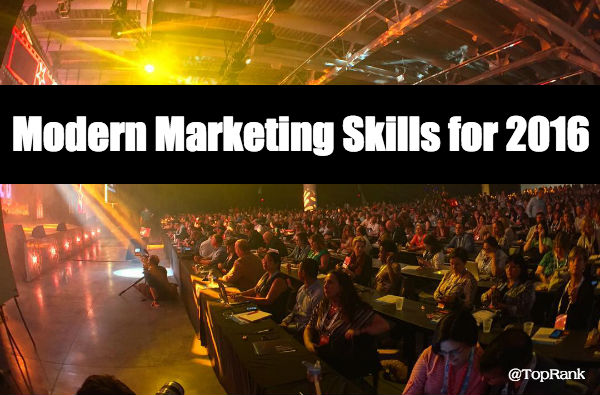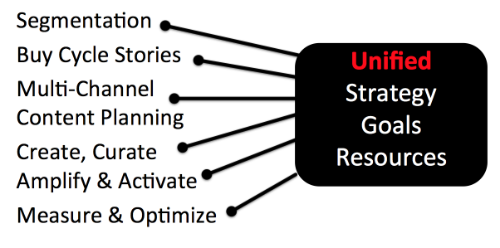
Recently I gave a goals, vision, mission presentation internally at our agency and an important part of it centered around the marketing skills needed individually and collectively to reach our goals.
The basic analysis of the published skills of our own team in preparation for my presentation revealed we have a collective 700+ skills listed across nearly 30 marketers. While that is quite a robust array of skills, it is my belief that we can always do better.
The fast pace and changing nature of our industry is not for the faint of heart or for those that subscribe to mediocrity. What seemed advanced in marketing skills a few years ago has become 101 level today.
In fact, a lot of digital marketing is becoming commoditized with experienced practitioners having access to pretty much the same blogs, conferences and training, professional networks, tools and resources. The cost to access some of these resources is a factor, but the ability to plan and execute is an even greater differentiator.
Executing marketing at a competitive level means skills that operate at a high level. What are those skills? What differentiates high performing marketers? What are the differences between client side marketing skills and the skills marketing consultantsshould have?
For marketing consultants, it’s essential to have the right strategic and tactical skills, but soft skills really make the difference in level of service delivered:
- Speak Agency and Client
- Goals Focused
- Understand Strategy vs. Tactics
- Ability to Listen and Empathize
- Skilled at Prioritization and Delegation
- Ability to Work With Cross-Functional Teams
- Professionalism
- Effectively Communicate Good News and Bad
Tactical Marketing Skills: I’ve talked a lot at conferences about necessary skills for modern marketers that want to make the most out of the rising tide in content marketing. This is especially a focus as disciplines converge between PR and Marketing, SEO and Social, Content and Advertising.

There will always be a need for strategic generalists and tactical specialists when it comes to marketing skills. From the ability to dig through customer data to identify segments to creating integrated, multi-channel content programs to ongoing performance measurement and optimization, I think the bar is higher for what constitutes essential content marketing skills.
Of course, while content is the kingdom in marketing, there are many other channels and areas of focus from the skills needed for the various marketing technologies and growing areas like predictive analytics to specific channels like mobile.
LinkedIn (client) recently published the results of a new study “What LinkedIn Data Reveals About Modern Marketers” that offers a number of interesting insights about the stated and in-demand skills for modern marketers.
It turns out there’s quite a difference between the most often stated skills and the skills that are in demand by companies hiring marketers:
The five most common skills lists by marketers in 2015 in their LinkedIn profiles are:
- Social Media Marketing
- Digital & Online Marketing / Strategy
- Marketing Event Management
- Market Research & Insights
- Database and Direct Marketing
The top five skills that are currently most in-demand are:
- SEO/SEM Marketing
- Digital & Online Marketing
- Marketing Campaign Management
- Channel Marketing
- Marketing Demand Generation
I think it’s generally true that most people over-index on “social media” skills since so many people who use social networks consider that as qualification as the ability to market on social networks. What’s remarkable to me is that SEO isn’t anywhere in the top 5 of stated skills, yet it’s the number one skill in demand.
Whether you agree with the specific marketing skills needed or not, there’s no arguing that attention to individual and the collective skills of your marketing organization (internal or agency) need to be optimized on an ongoing basis.

